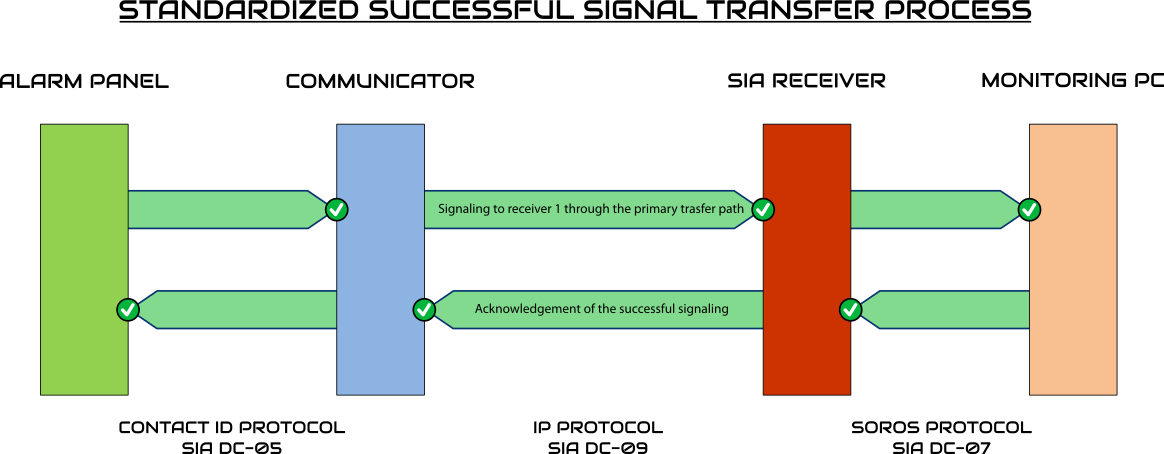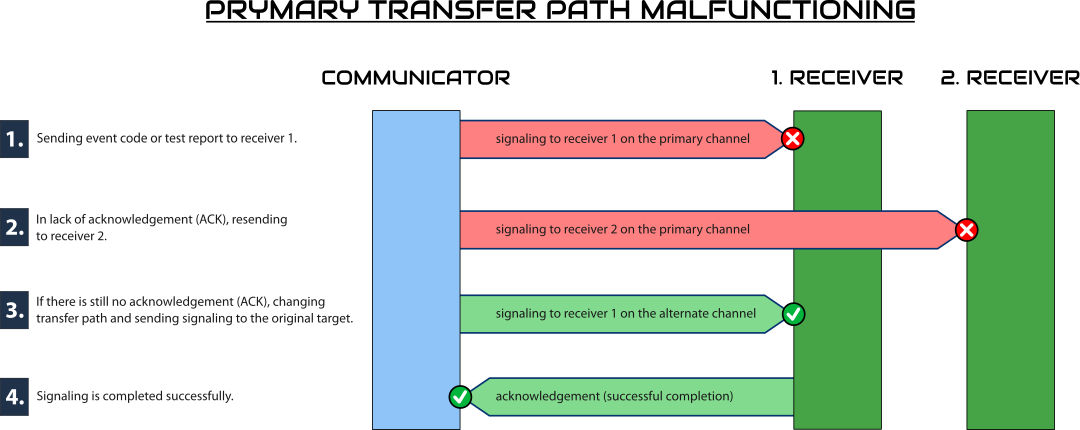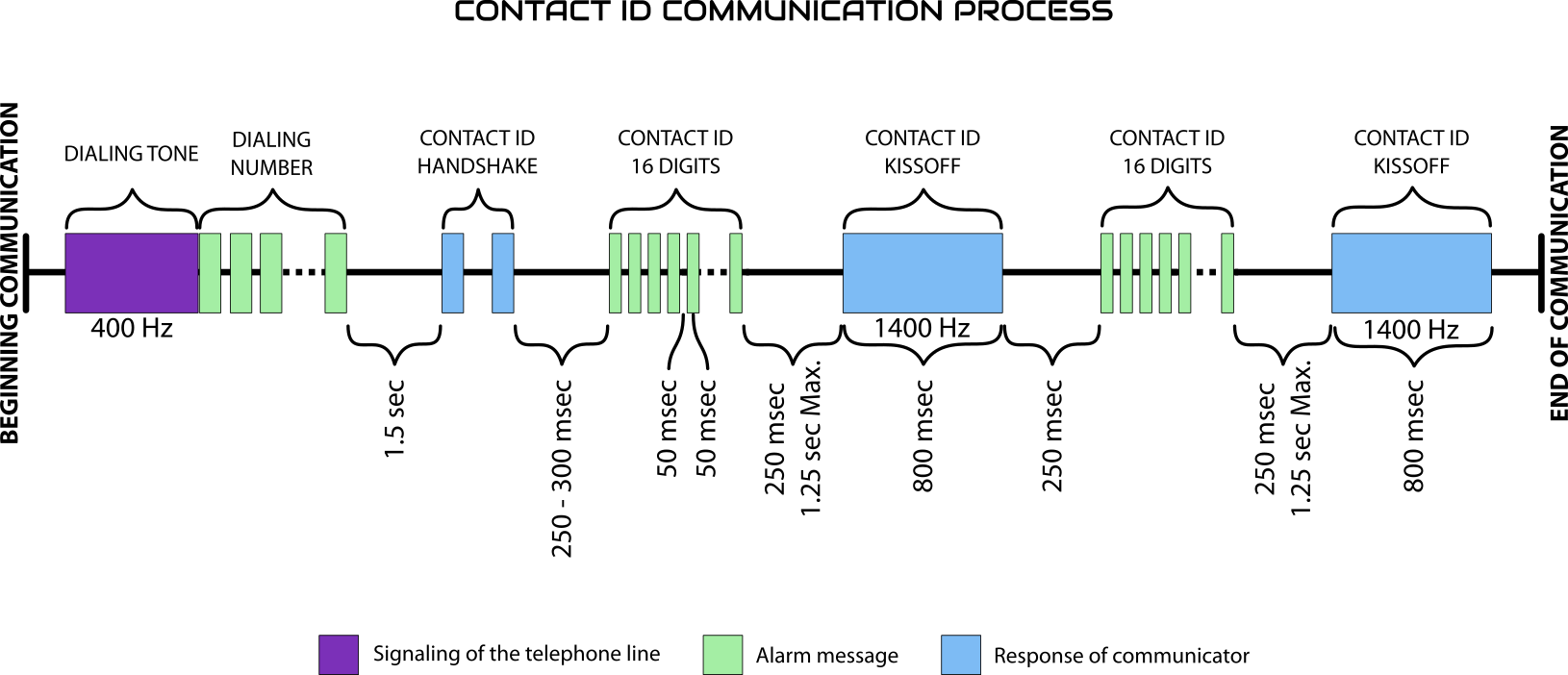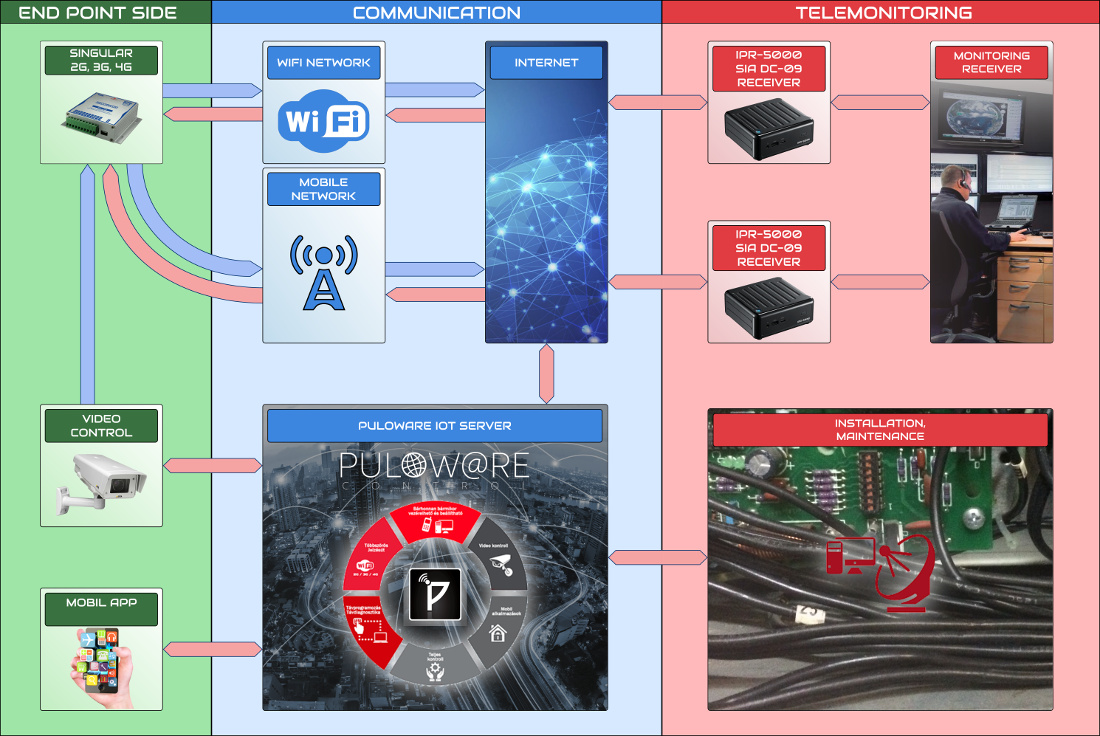Signaling path from the alarm to the monitoring station
Alarms normally can send their signaling through wired telephone lines (TIP/RING), in several selectable formats, though. The most widespread is Contact ID, which can be selected in almost all alarms, thus the Securecom communicators are prepared for it as well. When sending the signaling, the communicator simulates a wired connection towards the alarm, and receives the Contact ID event codes (SIA DC-05), then translates them to an IP packet (SIA DC-09), and forwards it to the remote monitoring station over an IP network. The remote monitoring receiver translates the IP packet to serial line data (SIA DC-07), and forwards them to the PC. If the monitoring program successfully received the actual event code, it returns an acknowledgement signal to the communicator. The device forwards this acknowledgement to the alarm in Contact ID format (Kissoff), and the signal transfer is completed successfully.




Signaling scheme

Establishing a remote serial connection
Manufacturers of the alarms designed the communication of their programming software for a short, wired connection, and did not expect significant delays in data transfer.
The response on the query takes between 1-10 msec of time, thus the maximum allowable timeout for errors is planned for relatively short, only 200-500 msec. This is a very short time, considering the average delays on a mobile network and the Internet. This is causing the challenge, and in the same time it defines, which type of network is capable of establishing a nearly real-time connection.
The TDMA (2G GPRS) access system is not adequate because of the long delay, thus the connection can be established on a CDMA (3G, 4G) or WiFi network.
|
Average response time on the following networksResponse time(ms)WIFI2G GPRS3G HSPA4G HSPA+4G LTE0200400600800Transmission channelResponse time (ms)
|
In order to make the data exchange work, 3 components should cooperate.
1. A communicator (3G or WiFi) on the alarm side is necessary, which receives or sends data from/to the alarm, through the physical serial connection, then communicates them to the “communicator” account on the server, over the mobile network
2. A virtual serial port software is necessary, which makes the PC program “believe” it was really the port of the alarm, and the data is communicated over the Internet to the “serial port” account on the server
3. Finally, an IoT server is necessary to run the data exchange between the two accounts
